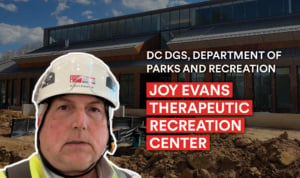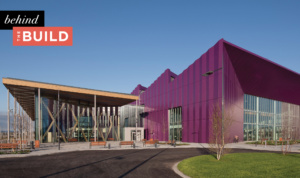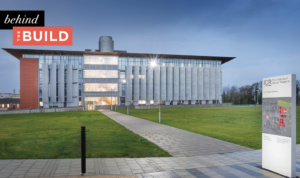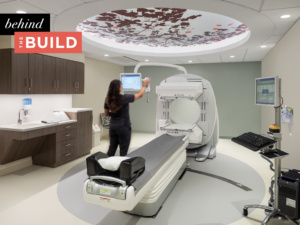Behind the Build: Century Plaza

MGAC was founded with the promise to take on the most interesting and challenging project ideas and make them a reality. Getting there is a matter of a million small steps, countless conversations, a multitude of carefully-calibrated decisions that take place between day one and that long-awaited project delivery day. Those are the moments that make a project. We’re revisiting them as we delve into the ways our talented, passionate team makes each of our projects possible. Today, we go Behind the Build and revisit our work with Century Plaza.

In the heart of Century City lies Century Plaza, a dazzling development with a colorful past. Its story began in earnest in 1966 when Century Plaza Hotel first opened its doors. At 19 stories, it was the tallest building in the city at the time, and on a clear day, had views that stretched all the way to the Pacific Ocean. Housed on the former back lot of 20th Century Fox Studios, captured all the glitz and excitement of heyday Hollywood, and as the first hotel to have color televisions in all of 750 rooms, it was deemed the “hotel of the future.” Designed by Minoru Yamasaki, the architect behind the World Trade Center, the arc-shaped structure became an instant Los Angeles landmark. Over the years, it hosted multiple Presidential events, the Apollo 11 astronaut welcome dinner, and many of Hollywood’s stars serving as the venue for some of the award season’s biggest shows on more than one occasion.
In 2016, Century Plaza was ready for its new chapter, and that is when we came in. The project comprised a 2,000,000 SF mixed-use restoration and redevelopment of the hotel as well as the ground-up construction of two 46-story high-rise residential towers, retail shops, and restaurants.

A SMALL TASK THAT WOULD LEAD TO SO MUCH MORE
In 2017, we were brought in by developer Next Century Partners to provide an independent cost review of the concrete package self-performed by the general contractor. Our team comprised of Rick Lloyd, Paul Abernathy, Joey Ramirez, Jayson Lacno-Musngi, and led by Ana Apan analyzed all direct and indirect costs, as well as productivity rates and made the recommendation for the developer to competitively bid the package with both the contractor and several concrete subcontractors. This resulted in significant savings. A win-win outcome.
From there, we were asked to take on a bigger job: a full cost estimate for the entire project. At a high level, we were asked to cross-check the initial guaranteed maximum price (IGMP) originally prepared by the contractor in order to validate that the amount was fair and reasonable. Our independent cost estimate came in higher than the IGMP and required MGAC to work closely with the developer, contractor and design team to provide a clear understanding, assessment and strategic recommendations for budget realignment and ongoing cost risk mitigation and management to protect the project against further cost increases as the design was completed and trade packages were bid out.

A DIFFICULT DEBRIEF
For a project this size, any projected cost overage threatens the entire feasibility and future of the project. And at this point, some of the work was already very much underway and well into the design development phase. Meanwhile, the team had been operating under the assumption that everything was on time and on budget. So came our first challenge: to present our findings in a way that brought everyone up to speed on the situation—quickly.
It can be difficult to step into a project after it’s already moving and share tough news. As independent and impartial consultants with the bottom line and our client’s best interest at heart, that’s what our job looks like sometimes–especially when we are brought in later in the game. To make that debrief easier, we presented the data for this large-scale, complex project in a way that was easily digestible and flexible, so that we could all get on the same page without missing another beat.
Once it had become clear that the difference from the originally assumed estimate was too large for a traditional value engineering scale-back, and that the overall scope of the project would require some re-evaluation, the next phase of our work began.

AN EXERCISE IN REALIGNING
Once again, we rolled up our sleeves to take on a new—and even bigger—task: an exercise in realigning. We assessed the entire project from a scope, quality, and budget standpoint. It was at this point that we moved fully into the fold and went from being the independent eyes and ears on the project to taking on a larger role as an active and essential partner delivering solutions. That kind of all-in approach is what we are known for, and what sets MGAC apart. We were eager to get started. But we’d soon learn that stepping into that role, on this job, would come with its own unique challenges.
First, was the unavoidable fact that some of the project work had begun or was already lined up under prior budget understandings. Ideally, our role spans project feasibility through design, construction, and close-out in order to ensure every phase, every contractor, every single detail of the project had been diligently accounted for from the jump. Securing the maximum amount of cost information at the earliest possible stage starts a project on the right foot. To set the project on a feasible path—one that would move everyone forward in a successful way—we had to first work backward.
Secondly, the project had multiple funding sources, two distinct loans, five GMP packages, and several bid packages in the mix. There was quite a bit to plan around, manage, and control with regard to budgets. Fortunately, our team is well-versed in navigating complex cost scenarios.
Finally, we had a fast-track schedule to reckon with, an all-too-common challenge that speaks for itself.

A NEW ROAD MAP
Taking all of these needs into account, we delivered a viable cost plan. It offered a detailed breakdown of the multiple permit and funding packages, as well as a cost analysis of all of the individual program spaces (ranging from guest rooms to retail to food and beverage), of the new builds, and of the upgrades for the existing historic elements. It allowed the developer to easily track costs by program space and to assess level of investment versus level of income. And, to better meet the needs of a large, complex project, the management system we developed supported timely data analysis and financial reporting, effectively arming our client with all the data needed to make strategic decisions about the project’s scope of work, design quality, and revenue projections.
Above all, the plan outlined a road map back to budget where required and delivered a baseline record of scope and cost to be used for future change order review. Our detailed cost estimate also served as a record of the scope of work contained within the Final GMP, and become a control document for assessing entitlement for all future change orders. When the project moved forward, our work continued as we operated as an extension of the developer’s in-house management team providing post-contract change order management. Through that role, we have proudly protected the developer’s interest and investment by saving millions of dollars in proposed change orders over the past four years.
A MIXED-USE MARVEL
Today, Century Plaza is nothing short of extraordinary. The Fairmont Century Plaza hotel has been completely re-imagined and is home to 400 beautifully appointed guest rooms, 85 suites, and 63 privately-owned Fairmont residential units. The spacious rooms boast private terraces, marble bathrooms, and upscale amenities such as in-room espresso machines. The Bar at Century Plaza, which in its storied life welcomed performances from the likes of Sonny & Cher, Mariah Carey, and Elton John, once again invites guests to enjoy live music and marvel at the stunning floating fireplace. The new 14,000 SF spa has a Himalayan salt room, an aromatherapy steam room, and an experiential rainfall-style shower and sanarium. There’s now 24,000 SF of indoor meeting space, and the 13,000 SF ballroom is one of Los Angeles’ largest red-carpet-ready event spaces, ensuring Century Plaza’s reputation for unrivaled hospitality and putting on show-stopping soirées will live on. To top things off, the hotel’s rooftop pool and garden offers sweeping views that span the city, Hollywood Hills, and the Pacific.
The two new LEED Silver 46-story towers which frame the hotel are home to 290 luxury condominiums, three outdoor pools, private dining rooms, wine storage, private theaters, retail and restaurant offerings, and a helipad. In all, Century Plaza is truly a mixed-use marvel, and we are so honored to have played a role in securing its landmark legacy.
All projects face financial challenges, and Century Plaza was no different. However, on this project those challenges came at a difficult time – midway through design with an IGMP in place that everyone was relying on. Delivering tough news to a Developer is hard to do and hard to accept, but it is vital information that needs to be delivered with accuracy, reliability, and confidence so that the project can move forward. This is where MGAC steps in – we deliver sound and reliable information but more importantly we provide a continuous pro-active approach to finding the right solutions and helping Clients navigate any and all future budget challenges in order to deliver world class projects that maximize value and investment. Our cost team feels proud to have been part of this process and fortunate to have worked on such an amazing project with a Client who truly valued our contributions from those early days assessing the concrete package, all the way through to being part of their executive cost management team six years later.









